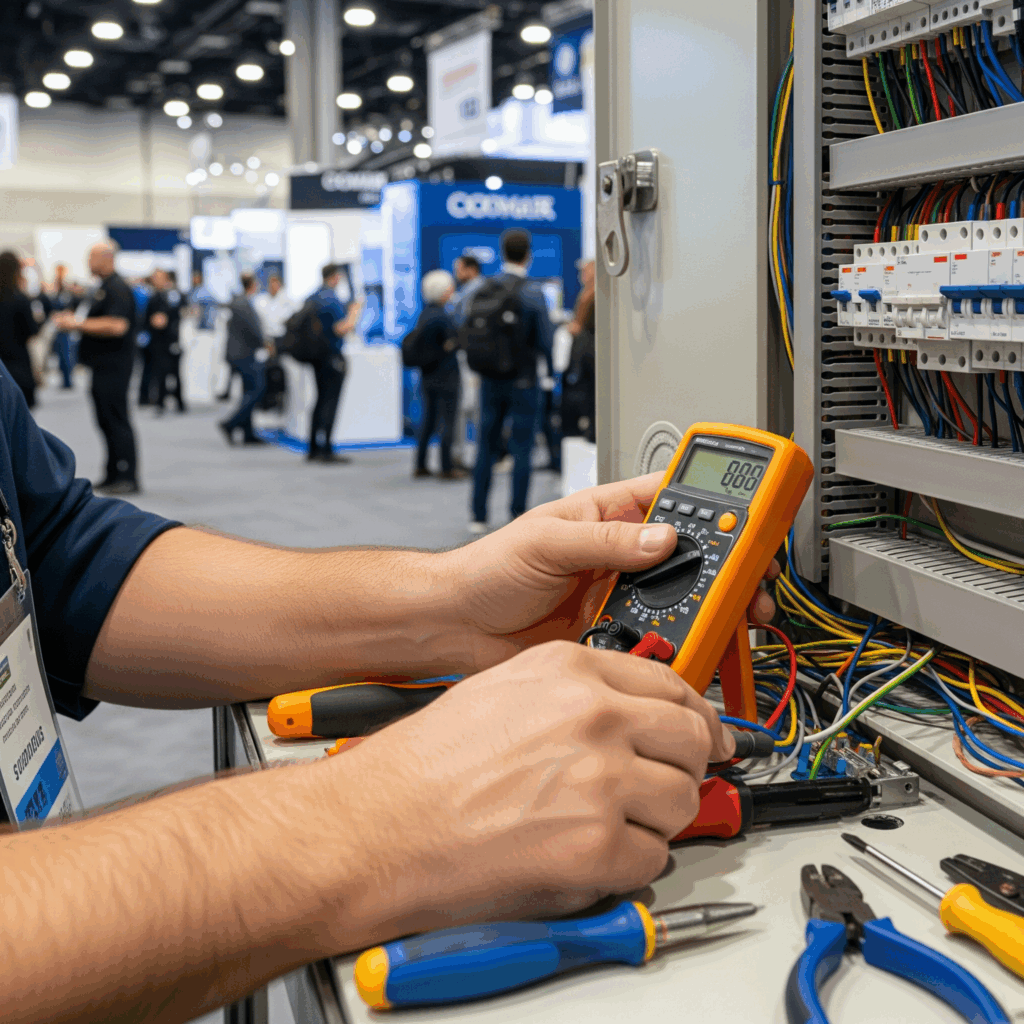Many exhibitors feel overwhelmed when it comes to ordering booth electrical. The forms are written for electricians, not exhibitors, and it’s easy to underestimate how much power you’ll need. With some planning and the right approach, you can simplify the process and avoid surprises on the show floor.

Track Your Electrical Needs from Show to Show
Keep a copy of every order form you submit and bring it to the next event. Make notes on what worked, what didn’t, and what you forgot to order. Track details like labor requirements, outlet placement, and actual usage. Over time, you’ll build a reliable reference that saves both time and money.
Work with Experts
A local electrician can translate the technical language on the forms and help you calculate accurate power loads. Your exhibit house should also be able to guide you through the process and suggest ways to save. Relying on experts reduces the risk of costly mistakes.
Plan Your Electrical Drops in Advance
One of the biggest challenges in booth electrical planning is deciding where power will enter the booth. Mark outlet locations directly on your floor plan before submitting it. Consider:
- Product displays that need dedicated power
- Screens, demo stations, or interactive areas
- Staff charging stations
- Traffic flow and trip hazards
The more specific your diagram, the smoother your installation—and the less you’ll pay for onsite adjustments.
Simplify with a Distribution Box
For larger exhibits, a distribution or junction box is a smart investment. Instead of multiple individual drops, you combine your electrical supply into a single entry point. Benefits include:
- Easier ordering and cost tracking
- One central location for troubleshooting
- Reduced downtime waiting for show electricians
Don’t Underestimate Power Needs
Ordering too little power is one of the most common mistakes exhibitors make. If you order 1500 watts, that’s exactly what you’ll receive—not more. Remember to account for hidden loads like laptops and phone chargers. Always build in a cushion for unexpected devices.
Sample Wattage Planning Chart
| Device / Equipment | Typical Wattage | Notes |
|---|---|---|
| Laptop | 100W | Per unit |
| Desktop Computer | 250–400W | Depends on specs |
| LED Monitor (32”) | 150–250W | Larger displays may draw more |
| Tablet / Phone Charger | 10–20W | Small individually, but add up quickly |
| LED Spotlight | 50–75W | Per fixture |
| Video Projector | 300–600W | High-brightness projectors can exceed 800 |
| Lead Retrieval Machine | 50–100W | Varies by provider |
| Coffee Maker | 800–1200W | Often overlooked but common in booths |
Use this chart to add up your estimated loads before completing the order form. Always build in a cushion for unexpected devices. It’s far better to have a little extra capacity than to risk a blackout mid-show.
Quick Booth Electrical Tips
- Save and annotate every electrical order form
- Review power needs with an electrician or exhibit house
- Map out drops on your floor plan before ordering
- Use a distribution box for larger spaces
- Order slightly more power than you expect to need
Final Thought
Reliable booth electrical is the backbone of any successful exhibit. By keeping records, planning your drops, and ordering enough power, you’ll avoid last-minute stress and costly fixes. Absolute Exhibits has guided clients through complex electrical planning, ensuring that booths are powered, functional, and ready to perform on the show floor.
See also:
Understanding Trade Show Electrical Services: A Beginner’s Guide to Forms
Exhibit Electrical Planning: Mistakes That Cost Exhibitors Money



